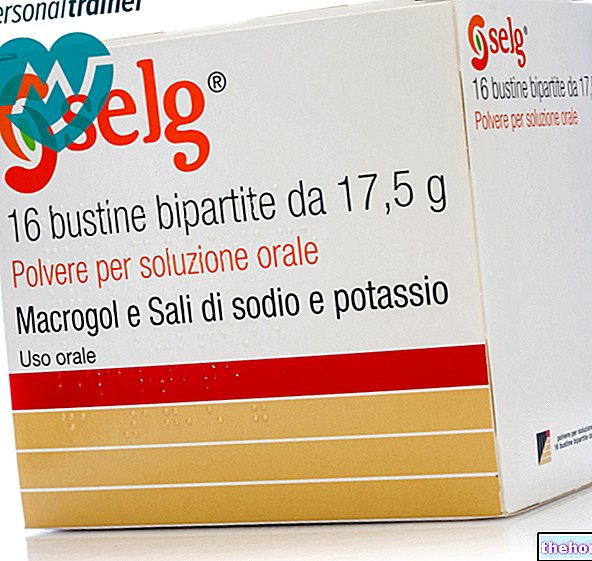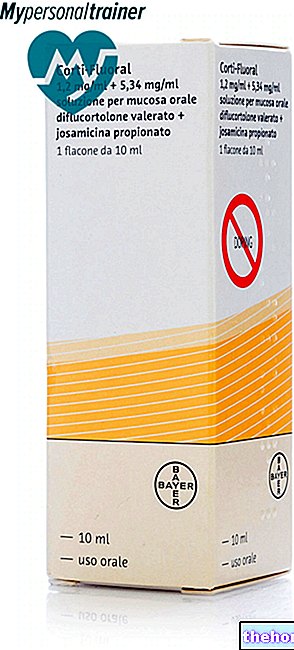Active ingredients: Indapamide (Indapamide hemihydrate)
MILLIBAR 2.5 mg Capsules, hard
Indications Why is Millibar used? What is it for?
PHARMACOTHERAPEUTIC CATEGORY
Diuretics with minor diuretic action - Sulfonamides.
THERAPEUTIC INDICATIONS
Treatment of essential arterial hypertension.
Contraindications When Millibar should not be used
Severe hepatic and / or renal insufficiency and anuria: recent cerebral vascular accidents; pheochromocytoma, Conn syndrome. Individual hypersensitivity to the product and other sulfonamide derivatives. Although animal studies have not shown teratogenic effects, use during pregnancy and lactation is not recommended, unless otherwise advised by the doctor on the risk-benefit ratio.
Precautions for use What you need to know before taking Millibar
Periodic checks of the electrolyte picture should be performed during indapamide therapy, paying particular attention in patients undergoing dietary restriction, in the elderly, in those who present vomiting or diarrhea or who are receiving parenteral solutions, those who use chronic laxatives or corticosteroids. . Furthermore, some patients may be particularly predisposed to electrolyte imbalances (for heart failure, kidney and / or liver disease, ventricular arrhythmias, treatment with cardiokinetic glycosides, etc.) and in this case a potassium supplement may be necessary. A mild hypochloraemic alkalosis may occur during treatment which does not require specific treatment except in patients with liver or kidney disease.
Although numerous clinical studies have been conducted on gout patients or hypertensive diabetics and despite indapamide has not significantly changed the haematological parameters, it is advisable to check uricemia and glycaemia before treatment and to periodically monitor these data during the course of the treatment. therapy.
During therapy there may be a slight increase in blood calcium so it is necessary to interrupt the administration before performing the parathyroid function tests. As with thiazide diuretics, a reduction in PBI may occur with no signs of thyroid dysfunction.
No rebound phenomena have been reported after discontinuation of treatment.
Interactions Which drugs or foods can modify the effect of Millibar
Potential hypokalaemia increases the risk of digitalis toxic effects. Severe potassium depletion can occur if drugs such as corticosteroids, corticotropin and amphotericin B are taken concomitantly with indapamide. When greater hypotensive efficacy is required, indapamide can be combined with other drugs such as beta-blockers, ACE inhibitors, methyldopa, clonidine or other adrenergic blocking agents. Temporary administration of diuretics which can cause hypokalaemia is not recommended.
Do not administer lithium at the same time as reducing the renal clearance increases the risk of lithium toxicity.
Warnings It is important to know that:
For those who carry out sporting activities: the use of the drug without therapeutic necessity constitutes doping and can in any case determine positive anti-doping tests.
Pregnancy and breastfeeding
Although animal studies have not shown teratogenic effects, the use of indapamide is not recommended during pregnancy and lactation.
Effects on ability to drive and use machines
Millibar has no effect on the ability to drive and use machines.
Dosage and method of use How to use Millibar: Dosage
1 capsule per day (in the morning) whatever the severity of the disease. It is not necessary to adopt a sodium-free diet.
Overdose What to do if you have taken too much Millibar
At doses higher than those recommended, indapamide has an important diuretic action with a reduction in volume and alterations in the electrolyte and acid-base balance, which can progress to hypotension and respiratory depression. There are no specific antidotes. In such cases it is therefore necessary to adopt adequate symptomatic measures to assist the respiratory and cardiovascular function.
Side Effects What are the side effects of Millibar
At the recommended dosage side effects are generally rare and of modest entity. Electrolyte imbalances (particularly hypokalaemia), nausea and gastrointestinal intolerance, asthenia, dizziness, drowsiness and occasionally muscle cramps have been reported; increased uric acid, blood sugar and orthostatic hypotension. Very rare cases of agranulocytosis and other blood dyscrasias have also been reported.
Compliance with the instructions contained in the package leaflet reduces the risk of undesirable effects.
It is important to inform the doctor or pharmacist of any undesirable effect, even if not described in the package leaflet.
Expiry and Retention
See the expiration date printed on the package.
The expiry date indicated refers to the product in intact packaging, correctly stored.
Warning: do not use the medicine after the expiry date indicated on the package.
Composition and pharmaceutical form
COMPOSITION
Each capsule contains:
Active principle:
2.5 mg indapamide hemihydrate (equivalent to 2.44 mg anhydrous indapamide)
Excipients:
Lactose, starch, magnesium stearate, titanium dioxide (E171), quinoline yellow (E 104), erythrosine (E 127), gelatin.
PHARMACEUTICAL FORM AND CONTENT
Hard Capsules - Box containing 50 capsules.
Source Package Leaflet: AIFA (Italian Medicines Agency). Content published in January 2016. The information present may not be up-to-date.
To have access to the most up-to-date version, it is advisable to access the AIFA (Italian Medicines Agency) website. Disclaimer and useful information.
01.0 NAME OF THE MEDICINAL PRODUCT
MILLIBAR 2.5 MG HARD CAPSULES
02.0 QUALITATIVE AND QUANTITATIVE COMPOSITION
Active principle:
Indapamide hemihydrate 2.5 mg (equal to 2.44 mg of anhydrous Indapamide).
For excipients, see section 6.1.
03.0 PHARMACEUTICAL FORM
Hard capsules.
04.0 CLINICAL INFORMATION
04.1 Therapeutic indications
Treatment of essential arterial hypertension.
04.2 Posology and method of administration
2.5 mg orally in a single administration in the morning.
04.3 Contraindications
Indapamide is contraindicated in patients with severe hepatic and / or renal insufficiency and anuria, recent cerebral vascular accidents, pheochromocytoma, Conn's syndrome and individual hypersensitivity to the product or other sulfonamide derivatives.
04.4 Special warnings and appropriate precautions for use
Periodic checks of the electrolyte picture should be performed during indapamide therapy, paying particular attention in patients undergoing dietary restriction, in the elderly, in those who present vomiting or diarrhea or who are receiving parenteral solutions, those who use chronic laxatives or corticosteroids. . Furthermore, some patients may be particularly predisposed to electrolyte imbalances (for heart failure, kidney and / or liver disease, ventricular arrhythmias, treatment with cardiokinetic glycosides, etc.) and in this case a potassium supplement may be necessary. A mild hypochloraemic alkalosis may occur during treatment which does not require specific treatment except in patients with liver or kidney disease.
Although numerous clinical studies have been conducted on gout patients or hypertensive diabetics and despite indapamide has not significantly changed the haematological parameters, it is advisable to check uricemia and glycaemia before treatment and to periodically monitor these data during the course of the treatment. therapy.
During therapy there may be a slight increase in blood calcium so it is necessary to interrupt the administration before performing the parathyroid function tests. As with thiazide diuretics, a reduction in PBI may occur with no signs of thyroid dysfunction.
No rebound phenomena have been reported after discontinuation of treatment.
Keep this medicine out of the reach and sight of children.
04.5 Interactions with other medicinal products and other forms of interaction
Potential hypokalaemia increases the risk of digitalis toxic effects. Severe potassium depletion can occur if drugs such as corticosteroids, corticotropin and amphotericin B are taken concomitantly with indapamide.
When greater hypotensive efficacy is required, indapamide can be combined with other drugs such as beta blockers, ACE inhibitors, methyldopa, clonidine or other adrenergic blocking agents.
Temporary administration of diuretics which can cause hypokalaemia is not recommended.
04.6 Pregnancy and lactation
Although animal studies have not shown teratogenic effects, the use of indapamide is not recommended during pregnancy and lactation.
04.7 Effects on ability to drive and use machines
The preparation has no effect on the ability to drive and use machines.
04.8 Undesirable effects
At the recommended dosage, unwanted side effects are mild and generally transient:
- electrolyte imbalances (especially hypokalaemia)
- asthenia, dizziness, drowsiness
- nausea and gastrointestinal intolerance
- muscle cramps
- orthostatic hypotension
- slight increase in urea nitrogen
04.9 Overdose
At doses higher than those recommended, indapamide has an important diuretic action with a reduction in volume and alterations in the electrolyte and acid-base balance, which can progress to hypotension and respiratory depression.
There are no specific antidotes. In such cases it is therefore necessary to adopt adequate symptomatic measures to assist the respiratory and cardiovascular function.
05.0 PHARMACOLOGICAL PROPERTIES
05.1 Pharmacodynamic properties
Pharmacotherapeutic group: diuretics with minor diuretic action, excluding unassociated thiazides-sulfonamides.
ATC code: C03BA11.
Non-thiazide sulfonamide derivative with indole nucleus, belonging to the diuretic family, indapamide exerts in hypertensive man, at a dose of 2.5 mg per day, a prolonged antihypertensive activity.
Dose-effect studies have shown that at 2.5 mg per day the antihypertensive effect is maximal while the diuretic effect is small and clinically not evident.
At higher doses the antihypertensive action does not increase while the diuretic effect is amplified.
At the antihypertensive dose of 2.5 mg per day, indapamide reduces the vascular hyperactivity of the hypertensive to noradrenaline and decreases total peripheral resistance and arterial resistance.
Indapamide carries out its pharmacological activity through a double mechanism of action: it determines a contraction of plasma volume following inhibition of sodium reabsorption at the level of the tubular-distal epithelium, and reduces peripheral resistance by normalizing vascular hyperactivity through a "direct action, probably following a reduction of ionic exchanges through the membrane of the vascular walls. A new theory proposes that the vascular and hypotensive activity is due to the stimulation of the synthesis of the prostaglandins PGE2.
Numerous studies have recently shown that, even in long-term therapies, at the recommended dosage, indapamide has no negative effects on either lipid metabolism by not significantly affecting triglyceride levels, LDL or the LDL / HDL ratio, or on glucose metabolism.
The drug does not usually change the range or heart rate and does not significantly reduce renal blood flow and glomerular filtration.
05.2 "Pharmacokinetic properties
Indapamide is rapidly and totally absorbed from the digestive tract: the maximum plasma peak is reached in humans within the first and second hour after administration of a single oral dose.
The biological half-life is 18 hours. Distribution occurs throughout the organism. 60% of the product is excreted via the urine.
At peak plasma concentration, we find 75% unchanged indapamide and 25% metabolites; at the urinary level, on the other hand, unchanged indapamide represents only 5% of the excretion products.
The plasma protein binding rate is 79%. Repeated administration of indapamide does not modify the kinetics of the product in relation to the single administration, thus avoiding the risk of accumulation; approximately 60% of the drug is excreted in the urine within 48 hours.
No significant changes in indapamide pharmacokinetics were noted after administration to elderly patients.
Indapamide is not cleared from the circulation by hemodialysis.
05.3 Preclinical safety data
Acute and chronic toxicity studies were conducted in mice, rats, rabbits and dogs both orally and parenterally without demonstrating any type of toxicological risk. In particular, in mice and rats the LD50 for oral administration was higher than 3 g / kg.
- Chronic toxicity
Indapamide is perfectly tolerated in rats, after oral administration for 24 weeks at doses of 3 and 10 mg / kg.
In dogs, indapamide is perfectly tolerated at a dose of 2 mg / kg for 16 weeks. The tests for fetal toxicity and teratogenesis performed in rats and rabbits were negative.
06.0 PHARMACEUTICAL INFORMATION
06.1 Excipients
Each capsule contains Indapamide hemihydrate with the following excipients:
Lactose; starch; magnesium stearate.
Constituents of the hard gelatin capsule:
Titanium dioxide (E171); quinoline yellow (E104); erythrosine (E127); jelly.
06.2 Incompatibility
No particular.
06.3 Period of validity
5 years.
This period of validity refers to the product in intact packaging, correctly stored.
06.4 Special precautions for storage
No particular.
06.5 Nature of the immediate packaging and contents of the package
Box containing 50 capsules in blister packs.
06.6 Instructions for use and handling
As described in posology and method of administration.
07.0 MARKETING AUTHORIZATION HOLDER
Italian Pharmaceutical Biochemical Laboratory LISAPHARMA S.p.A.
Via Licinio, 11 - 22036 ERBA (CO)
Dealer for sale
SCHARPER S.p.A., Via Manzoni, 45 - MILAN
08.0 MARKETING AUTHORIZATION NUMBER
A.I.C. n. 025686015
09.0 DATE OF FIRST AUTHORIZATION OR RENEWAL OF THE AUTHORIZATION
June 2010
10.0 DATE OF REVISION OF THE TEXT
June 2010























-nelle-carni-di-maiale.jpg)




